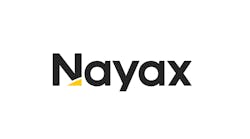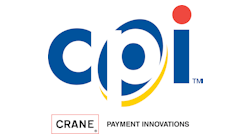The Unexplored Benefits Of Cashless Vending
Cashless technology on vending machines makes paying easy and convenient for end users who don’t carry cash. Furthermore, there are advantages for operators who have added these credit and debit card readers and mobile payment accepters. Using connected machines, operators can recoup connectivity fees, explore more efficient service techniques, add loyalty programs and evolve with the changing cashless payment options, including the upcoming push towards contactless payments.
What’s in your wallet
When credit/debit card readers for vending machines were first introduced, the benefit was straight-forward. Give consumers who don’t have cash the ability to make a purchase using what they do have, a credit or debit card. As more consumers started carrying smartphones and big technology brands added mobile payment capabilities such as Apple Pay, that became another payment choice to offer end users. However, not all vending machines have the technology to accept cashless payments. One reason is fees. The cashless terminal, its cellular connection for processing and each cashless transaction all cost the vending operator money. As operators took a chance on offering cashless terminals to consumers, evidence mounted that it increased sales.
Patrick Richards, product manager — electronic payments for Crane Connectivity Solutions, explains that there is a well-established increase in vending machine sales when a cashless terminal is added. “It’s a great way to generate more revenue,” Richards said. “Less than an hour to install, and you get a 35 percent sales lift for the life of the machine. Some go even higher.”
Paresh Patel, founder and chief executive officer of PayRange, considers there to be three levels of cashless implementation or what he calls “the evolution of connected vending.” Operators who begin investing in cashless are on the first level.
“Vending 1.0 is about making the sale — it’s about payment,” Patel said. “Most operators who are deploying cashless do it to make the sale; this generally generates a lift in sales, and in some cases can capture sales that would have been lost due to the inability of the consumer to make a cash payment.”
Getting to the next level means looking beyond the sales lift at other ways to take advantage of technology.
Connected equipment that pays you
Operators that utilize Crane’s cashless systems and have a video screen are in a position to utilize the Internet of Things (IoT) to offset the cost of going cashless.
“We want to help operators to reduce their cost without extra investment or management on their side,” said Richards. One way Crane helps operators reduce their cost is to utilize video screens and an advertising network.
“Screens can be added to new or old vending machines, but offer a new revenue opportunity, at least with Crane’s MediaNet.” Richards explains that Crane has agreements with brands where operators are paid monthly, per machine, for their participation in the advertising campaign.
In addition to pre-arranged marketing, operators can create their own ads to play on the video screen. This allows them to customize something for the location, support local businesses, build their own brand, offer seasonal promotions, etc., all on the vending machine.
Lastly, video screens can offer frustrated users an immediate refund. “The customer can report a stuck product or lost money via the screen,” explained Richards. “Customers simply input their phone number onto the screen and the operator can send a refund code, able to be used at that machine for 30 days.” The refund function improves the customers’ experience and grows loyalty.
Director of Marketing for USA Technologies Elyssa Steiner said, “Screens are a great way to advertise directly to the consumer about what is available in the machine, showcase new products, display promotions and ultimately increase their awareness and engagement at the point of sale.” She touts the ability of digital advertising to enable operators to leverage the space they already have (vending machines) and work with their consumer packaged goods (CPG) manufacturers to create revenue advertising for products they already carry. “We work with partners who help operators leverage these types of programs so that they can gain additional revenue from the advertising space available at the given machine,” Steiner added.
Better data and servicing
Further advantages in connecting machines to payment devices come from integration with other technologies that expedite servicing and ultimately reduce the cost of stocking and repairing vending machines.
“From an operational standpoint, connecting machines to payment devices leads to increased productivity, enabling remote machine management and monitoring,” said Carly Furman, CEO of Nayax LLC.
Nayax customers report a 30 percent decrease in operational costs, she added. Connected equipment can send alerts so operators are able to address service events immediately, avoiding revenue loss and decreasing machine downtime. There is also the ability to access sales and inventory data that enable business analysis and decisions regarding products and/or machine placement, adds Furman.
Data is level two in PayRange’s evolution of connected machines. “The technology can have data coming back to the operator to better manage their machines,” Patel said. “This can be to help with cash and product accountability, to know what is selling, reduce costs with better scheduling and improve sales with better product merchandising. And of course, prekitting has been a big part of this to save route operating costs. Some operators who have deployed connectivity have started to leverage the data more and more.”
Richards adds that connected machines enable this useful data to be collected remotely. He said, “With these connected machines, we are seeing more mobile sophistication coming. Without opening the machine, operators are able to diagnosis problems, connect to the cashless device, coin mech, etc. using Bluetooth technology.” It’s the ultimate IoT experience.
Steiner talks about connected machines in terms of optimized operational gains. “Now that the machine has been brought online, you can increase not only your service to the customer, but you can manage that machine remotely far better than before,” she said.
There are alert capabilities on some solutions that offer a simple plug-and-play device that sends important notifications. “...You go back to your office and you can see alerts beyond the device performance — about the bill acceptor, coin drop sensor and door opening or closing. The ability to remotely monitor and know what is happening at any given time to your machine, all equates to saved time, money and labor on servicing the machine(s),” Steiner said.
Customer loyalty & engagement
Furman has also seen cashless improve customer loyalty. “With connectivity, operators can improve consumer engagement, transforming their unattended machines to those that can interact with their consumers, providing promotions and discounts, all to build loyalty,” she said.
This idea of increasing consumer engagement leads us to PayRange’s last level of connected machines, Vending 3.0 or stimulating the sale.
“This is the next evolution in vending technologies and this is where the future is headed,” said Patel. “A few forward-thinking operators are already beginning to explore this, and those that get here first will have a competitive advantage. The competition today isn’t just other vending competitors, but also new ‘mobile experiences’ such as food delivery companies that use mobile apps to get food delivered directly to the worksite.”
Expanding payment options
Payments is an ever-evolving business, and having a cashless device means operators are better able to adapt. For example, Nayax sees payment through QR codes becoming a part of commerce in the U.S. as it is widely accepted worldwide as a preferred payment method (ex: WeChat Pay, Alipay, Paytm).
“Payments via dynamic QR codes provide users with a very secure, trusted transaction,” said Furman. Use of these codes requires cashless technology.
Credit card issuers are also pushing changes. A few years ago it was EMV® compliance which essentially required all cards to have an embedded chip. Nayax says EMV compliance is being requested for microtransactions now as well, as it reduces fraud at unattended locations. Furman recommends operators insist on working with EMV-compliant cashless devices.
With mobile payments, new payment methods can be accepted via app upgrades. With plastic cards, on the other hand, hardware change is typically required to keep up. Patel thinks contactless cards will be the next change in card payment after mag stripe and EMV to affect the industry. “Visa estimates 100 million contactless cards will be issued before the end of 2019,” he said. “The contactless cards are supposed to be more secure than magstripe cards, and more reliable as you don’t need to ‘swipe’ the card, but rather just present it to the NFC [near field communication] reader.”
“Payment technologies change — it’s hard (and expensive and time consuming) to keep machines current especially when operators invest hundreds of dollars for a payment terminal,” said Patel. “Most terminals today that have NFC should be able to accept the contactless cards, however.”
An alternative to traditional credit and debit cards or even mobile payments is using a closed cashless system. This can be a vending machine that accepts university cards, a fob connected to a stored value account or a system that leverages existing employee badges.
“It’s a cheaper solution with a lower transaction fee,” said Richards. “End users use bill validators or coin mechanisms as options to reload.”
One underutilized opportunity is having both an open and closed cashless system. Nearly all cashless terminals will support some type of closed contactless system. While there will still be connectivity fees, if a consumer pays using an existing account, there may not be a transaction fee at all, saving the operator money, explains Richards. “Implementation of closed cashless systems is still in its infancy in vending,” said Richards. “However, operators need to remember they have a captive audience — loyalty and frequency are built in. Therefore, closed cashless systems can be a big value.”
Once an operator has implemented cashless, the question becomes, How can he or she expand on the connected machine experience? That is where options that utilize the connected machines become beneficial, such as video screens that produce revenue, Bluetooth technologies that reduce service costs, devices for better consumer engagement that increases sales and cheaper/more flexible payment options.
Security threats loom in IoT era
While there are advantages to bringing vending machines online, there is also risk. Any connected machine or device is an opportunity for a hacker to get into that machine. Security, therefore, is more than PCI compliance. It is a commitment that needs to be ingrained in the culture.
“When it comes to ‘checking the security box,’ all some operators require is a copy of our PCI compliance certification,” said Patrick Richards, product manager — electronic payments for Crane Connectivity Solutions.
This is a good place to start since it’s required by the payment card industry and is essentially best practices, explains Richards. “However, it does not do anything to protect data, connections or prevent attacks,” Richards said. “Instead, security has to be an ongoing focus. At Crane, we are committed to investing in security, with dedicated resources focused on securing all aspects of the solution: hardware, software and cloud systems.”
Look beyond PCI
Security precautions should be comprehensive, said Carly Furman, CEO of Nayax LLC. “Our platform is PCI-DSS Level 1, in addition to our devices being EMV [Europay, MasterCard, Visa] L1,L2,L3 certified,” she said. “We have a 24/7/365 network operations center (NOC) monitoring team, checking for abnormalities and other events, and four redundant servers globally to which transactional traffic is routed when necessary. Additionally, operators can set thresholds (maximum number of daily transactions from one credit card) in the management suite to prevent fraud, preventing rogue credit card attacks.”
The importance of dedication in partnerships
Paul Stadler, vice president of product management at USA Technologies, believes operators need to always ensure that they partner with a company who makes both their security, and their customer’s security a priority.
“If you look at the evolution of payments as an industry there is an increased awareness of security,” Stadler said. “We, at USAT, have been using industry standard security practices since the inception of our processing solutions, and are adding new ones as they come into the market or gain acceptance as a new best-practice. In recent times, we’ve focused on adding EMV, SRED and enhancing our security practices as the market shifts and evolves.”
Stadler suggests three questions operators should ask:
How are you protecting my customers’ payments information?
What is PCI and what do I need to know to protect my company?
Because security protocols change, how are you ensuring you are continuously protecting me and my customer? Are you thinking about that as my partner?
Confused about technology? Check out "When To Add Technology" on page 18.

Emily Refermat
Emily began covering the vending industry in 2006 and became editor of Automatic Merchandiser in 2012. Usually, Emily tries the new salted snack in the vending machine, unless she’s on deadline — then it’s a Snickers.
Emily resigned from Automatic Merchandiser and VendingMarketWatch.com in 2019 to pursue other opportunities.








